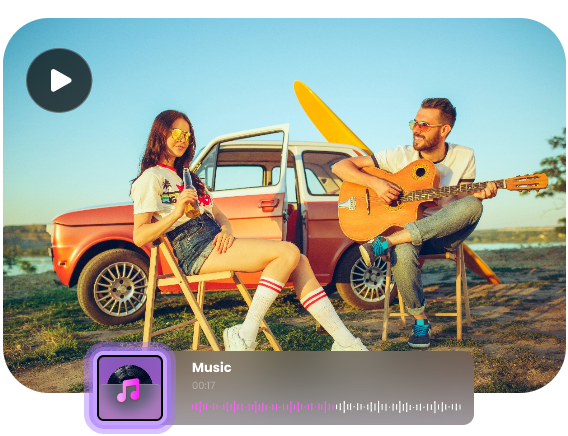The way people connect has shifted dramatically in the last two decades. Friendships no longer begin only in classrooms, workplaces, or coffee shops. They also start on screens—inside chats, forums, and video calls. This transformation, known as the rise of the digital friendship, has made relationships possible across time zones and continents. But it also raises a difficult question: can a virtual bond truly match the depth of a face-to-face one?
In 2025, over 5.24 billion people were active on social media worldwide, according to DataReportal. That means more than half of the world’s population is forming relationships, sharing emotions, and building trust online. It’s not just technology; it’s human interaction, rewritten in pixels and notifications.
Online friendships often start with shared interests. Two people might meet in a gaming community, an art group, an online chat, or through mutual followers on Instagram. The easiest way is to connect with platforms like Uahuah or CallMeChat, which connect users with strangers. While not everyone you chat with will become your friend, you'll have a good chance of forming any kind of relationship. More chances than anywhere else.
For many, digital relationships feel just as “real” as those in person. Pew Research asked adults in 2023 about friends they met on the internet. More than half—57%—said those online pals feel just as real as the ones they grab coffee with. What makes this possible? Communication consistency, emotional openness, and mutual trust—core ingredients of any relationship.
Unlike real-world interactions, online ones often remove physical and social barriers. Introverts blossom when no one is watching. I type my truth at 2 a.m. because the darkness can’t blush. It’s easier to hit “send” than to raise a trembling hand. Screens turn into late-night campfires—same place, different face, no masks, no shame.
People really do feel something when they hit send—those heart-eye emojis, the late-night DMs, the caps-lock cheers—they’re not fake pixels, they’re honest feelings flying through fiber-optic nights. Messages of support, empathy, or comfort typed through a keyboard can carry real warmth. Nobody could meet for coffee, but we texted memes at 2 a.m. or danced on blurry video calls until pajama clips went viral—connection re-loaded, not paused.
Still, something remains missing: Arms to hug, eyes that blink—proof you're alive, not a ghost in Wi-Fi. Close the laptop and you get back the small stuff that matters: the flicker in someone’s gaze, the real weight of a hug after bad news, the chorus of laughs that leaves your ribs sore. Human beings are wired for touch and in-person cues. We fill threads with laughter and tears, yet press send and still miss a piece of each other.
The difference thins; the colors rub together till a mix stays. Video chats already let us wave at grandma from three states away. Slip on a VR headset and you can high-five her ghost in a 3-D living room that feels weirdly real. Technology is narrowing the emotional gap—bit by bit.
Scroll and smile enough and you’ll meet nights you wish you’d unplugged. Happiness hides somewhere between airplane-mode sunsets. We cheer for likes, then wonder why we’re anxious. The chatter never stops, and the plot keeps thickening—one filter at a time. Scrolling through perfect snapshots day after day quietly seeds jealousy, feeds the ache of isolation, and trains the mind to size itself up. A 2023 study showed... Cutting-edge brain research that flips old ideas upside-down—straight from the scientists doing the experiments. If you scroll for hours, your mood crashes—research shows nonstop users feel 70 % bluer than casual scrollers.
It’s a paradox: a tool meant to connect people sometimes makes them feel more isolated. No heart-to-heart happens; we just swipe, sip coffee, and watch heavily-filtered stories that feel better than our own. Virtual validation—likes, hearts, and comments—can temporarily lift mood but rarely replaces authentic emotional intimacy.
For online friendships to be healthy, users need awareness. Recognizing when digital contact enriches life and when it drains emotional energy is key to maintaining balance.
Hearts can’t bond through fiber-optic cable unless you make space, lean in, and bring compassion. A couple dead-simple habits—camera at eye level, asking follow-ups instead of “cool”—can change pixel talk into the kind of hangout you remember later.
Say what you mean, straight-up. No code words, no mumbling. Express emotions honestly, even in messages. Words can hit like a drum—soft or loud—depending on how you line them up.
Consistency isn’t flashy; it’s brushing your teeth, lacing your shoes, and starting the run even when it’s raining.
Stack those plain little days and you’ll own the year. Regular communication builds trust. Long silences can weaken digital relationships faster than offline ones.
Use multiple formats. Stop thumb-typing novels. FaceTime while you make coffee; the steam and chatter feel like sharing the same kitchen.
Pass the mic, spill the memory, and watch strangers nod like they were there. Queue up the same flick, trash-talk over Mario Kart, or swap half-finished playlists and tag-team a weird Spotify sleeve together. Shared memories turn friends into chosen family; one campfire story at a time, the tie strengthens.
Stay out of other people’s space like you’d want them out of yours. That little green dot can fool you—being online doesn’t mean they’re actually free to chat. Respect when you’re done for the day and remember your buddy in Manila is three hours ahead.
Plan to meet. If possible, bring virtual friendship into the real world. Physical meetings often confirm and strengthen the emotional connection built online.
Tiny clicks and replies glue the screen-gap shut, turning a URL into the buddy who still remembers your birthday five years later.
Digital relationships can be both empowering and dangerous. They allow for expression, belonging, and global community. Yet, they can also lead to emotional exhaustion, overstimulation, and dependency. The balance lies in conscious connection—choosing quality over quantity, authenticity over performance.
Many psychologists now argue that emotional fulfillment doesn’t depend solely on physical proximity. It depends on intention. A sincere message from someone thousands of kilometers away can sometimes comfort more than silence from someone nearby.
The future of human connection may not be digital or physical—it will likely be both. Hybrid friendships, where people blend online communication with occasional real-world interaction, are becoming the new norm. In fact, surveys show that 63% of Gen Z adults maintain at least one close friendship that began online.
Technology will keep evolving. Virtual reality hangouts, AI-driven communication tools, and immersive spaces will make distance feel smaller. But the emotional essence will remain the same: care, trust, and shared experience.
Can virtual bonds be as strong as real-life ones? The answer is nuanced. Nobody, nothing. Add dirt-under-your-nails know-how and the numbers catch fire. An app can’t sit at your dinner table, yet it passes the salt anyway. We still pass stories, quarrels, birthdays—just faster, looser, planet-wide, and wearing different usernames each week.
Online connections are not weaker—they’re simply different. Miles don’t shrink, yet replies land in half a second. That tiny lag, or the lack of it, draws the new map of who’s really close.




Want to add a comment?